Mitral valve diseases are significant health problems that occur when the mitral valve, located on the left side of the heart, fails to function properly. In this article, we will discuss in detail the causes, symptoms, diagnostic methods, and recently developed treatment options for mitral valve diseases.
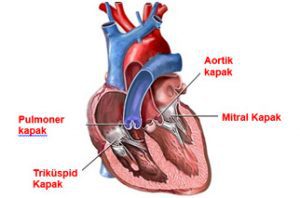
How Do the Heart and Mitral Valve Work?
Our heart is a powerful pump consisting of four chambers. Between these sections, called the right atrium, right ventricle, left atrium, and left ventricle, there are four main valves that ensure one-way blood flow. These are: the mitral valve, tricuspid valve, aortic valve, and pulmonary valve.
The mitral valve is located between the left atrium and left ventricle of the heart. When the heart contracts, this valve opens, allowing oxygenated blood to pass into the left ventricle. Then, the aortic valve opens, and blood is pumped throughout the body. In mitral valve diseases, this flow pattern is disrupted; this increases the heart’s workload and can lead to serious problems over time.
What Are the Causes of Mitral Valve Diseases?
Mitral valve diseases can be due to genetic or acquired causes. They are primarily classified into two groups:
1. Congenital Causes
In some individuals, the mitral valve may be structurally abnormal from birth. This condition is called congenital mitral valve disease and usually presents symptoms during childhood.
The most important mitral valve disease that we can consider congenital but often encountered in adult life is Mitral Valve Prolapse. This disease is the most common pathology causing mitral valve insufficiency. There is a structural weakness in the tissue of the leaflets forming the mitral valve, and consequently, the leaflet bulges towards the left atrium and fails to close completely during this process.
2. Acquired Causes
The most common causes encountered in adulthood are:
- Rheumatic fever: Calcification may develop in the mitral valve after this infection experienced during childhood.
- Aging: With age, the valve structure may deteriorate, leading to stenosis or insufficiency.
- Heart attack (ischemic disease): When the heart muscle doesn’t receive enough oxygen, the mitral valve may lose its function, causing insufficiency.
Types of Mitral Valve Diseases
Mitral Valve Stenosis
The valve leaflets thicken and calcify, preventing the valve from opening sufficiently. This condition leads to blood accumulation in the left atrium and eventually high pressure in the lungs.
Common cause: Rheumatic fever
Age of onset: Usually between 20-40 years
Symptoms: Shortness of breath, palpitations, exercise intolerance
Mitral Valve Insufficiency (Mitral Regurgitation)
When the mitral valve doesn’t close completely, some blood leaks back from the left ventricle to the left atrium. This condition increases the heart’s workload and weakens the heart muscle over time.
Common causes: Structural valve abnormalities, ischemic heart disease, connective tissue diseases
Symptoms: Shortness of breath, fatigue, arrhythmia
Symptoms of Mitral Valve Diseases
As the disease progresses, the following symptoms may appear:
- Shortness of breath with exertion or at rest
- Easy fatigue
- Heart palpitations
- Swelling in ankles and legs
- Increased coughing at night
- Heart murmur heard with a stethoscope
Diagnostic Methods for Mitral Valve Diseases
The diagnostic process usually includes the following steps:
- Physical examination: Hearing a heart murmur is an important finding.
- Echocardiography (ECO): The structure and function of heart valves are evaluated with ultrasound.
- ECG (Electrocardiography): Arrhythmias are detected.
- Chest X-ray: Heart enlargement and fluid accumulation in the lungs are investigated.
- Angiography: Heart vessels are examined before surgical planning.
Treatment Methods for Mitral Valve Diseases
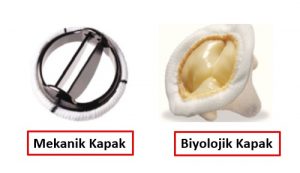
Treatment is planned according to the severity of the disease, symptoms, and heart functions. Basic treatment approaches:
1. Medication Treatment
Used to control symptoms in mild to moderate cases:
- Diuretics
- Beta blockers
- ACE inhibitors
- Rhythm regulators
- Anticoagulants (especially if there is arrhythmia)
2. Surgical Treatment
The decision for repair or replacement is made based on the degree of damage to the valve:
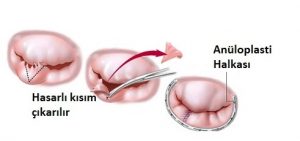
Valve Repair (Mitral Plasty)
The valve structure is repaired to preserve its functionality. It is preferred especially in young patients and in ischemic mitral regurgitation. There is no need for blood thinners like Coumadin.
Valve Replacement (Mitral Replacement)
Applied in patients where valve repair is not possible. Types of valves used:
- Mechanical valve: Long-lasting, but requires lifelong blood thinners.
- Biological valve: Does not require medication but has a lifespan of 10-15 years.
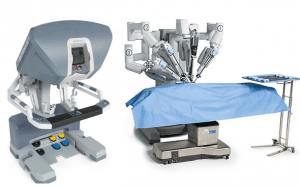
Minimally Invasive and Robotic Surgeries
Thanks to techniques developed in recent years, valve surgeries are possible without making large incisions. Especially in robot-assisted surgeries:
- The chest cavity is accessed between the ribs without cutting the breastbone.
- Cosmetic results are better
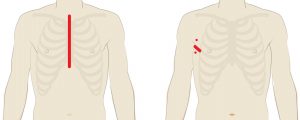
MitraClip Method
As an alternative to surgery in high-risk patients, leakage is reduced by clipping the valve leaflets with a catheter inserted through the groin.
What Happens If Left Untreated?
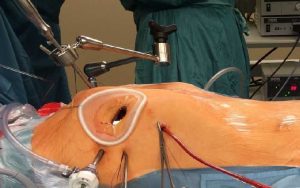
Since mitral valve diseases are progressive, the following complications may develop if not treated in time:
- Heart failure
- Rhythm disorders such as atrial fibrillation
- Cerebral embolism and stroke
- Pulmonary hypertension (high pressure in lung vessels)
- Tricuspid valve deterioration
Conclusion: Early Diagnosis Saves Lives
Mitral valve diseases can be controlled with early diagnosis and proper treatment. It is especially important for people experiencing symptoms such as shortness of breath, easy fatigue, and palpitations to consult a cardiologist without delay. Today, it is possible to successfully treat these diseases with advanced imaging techniques and surgical methods.
